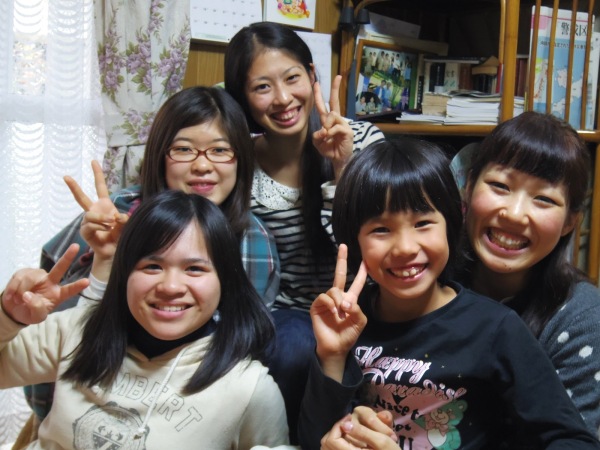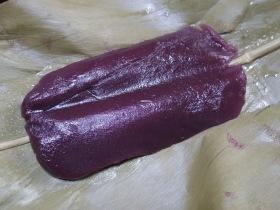Category: LOVE Okinawa
The Year End Family Get Together in Okinawa
The Year End Osoji in Okinawa
The Hatsuhinode in Okinawa
Ever since I started living alone, I’ve been going home to my parent’s place for the new years holiday. First it was Akita, then Osaka, and now Imabari. I can’t imagine not spending the holidays with family (probably because I don’t have a family of my own yet). So despite the expensive airfare and crazy holiday traffice, I always head home.
But this new years holiday, I decided we should all head down to Okinawa to spend new years with grandma. Because we moved around a lot, I never got the chance to spend vast amounts of time with my grandma after moving away from Okinawa when I was four. I send letters and we talk on the phone…but you know, it’s still nothing compared to actually spending time together.
Last time we were in Okinawa for Golden Week, we were only there together for four days and my baby sister was still in boarding school and couldn’t be there. But now that my parents are retired, they’re a lot more flexible with their schedule, so I thought what better time than now for a family trip to Okinawa? Especially when this years new years holiday gave us nine consecutive days off of work?
It ended up being the best idea ever.
The warmer weather was just what everyone needed, we got to catch up with old friends and family, and best of all, my grandma kept on telling me how happy she was to have everyone there for the holidays!
Made me so happy.
One of the things my grandma and I were excited about leading up to this trip was hatsuhinode, the first light of the year. And despite the weather forecast for a cloudy day, I kept my hopes up that we would be able to see a peak of the first sunrise together.
My uncle’s family drove down to see the sunrise with us. We all gathered (this may wound weird…) at my grandpa’s grave, because it has a really great view of the sea facing east. You’ll see that Okinawan graves are much larger than the one’s in mainland Japan. We waited in the cold for quite sometime as large clouds blocked the sunrise. But because it was so windy, it blew the clouds away and we were soon basking in the warm rays of this year’s first sunrise!
For me, it was the best way to welcome the new year.
Here are some photos:
The Flight to Okinawa
The Mu-chi Legend
@BuckedbytheStar You’ve eaten ウニムーチー? I heard about it via @etherealspirits and this site http://t.co/g4TFk8azXT. If yes, post pls! 🙂
— Ru Sumida (@RuSumida) September 18, 2013
//platform.twitter.com/widgets.js
Long time ago, in the land near Shuri Castle lived a brother with a younger sister. They always got along very well until one frightful day the older brother suddenly turned into an Oni and began attacking villagers and their livestock.Realizing something must be done to stop him, the younger sister devised a plan. She made his favorite food, mu-chi, but included a piece of iron in his. She called over her brother/Oni to the side of a cliff to eat together and enjoy the view. But because his mu-chi had the piece of iron in it, he could not chew on it, no matter how hard he tried. All the while his sister is munching on her mu-chi and enjoying it.
The brother/Oni could not understand why he couldn’t eat his mu-chi. His eyes then went to her lower body and he demanded to know what what going on with her “mouth” down there. She in turn lifted her kimono and closed in on her brother/Oni saying, “My mouth up here is for eating mu-chi…and my “mouth” down there is for eating Oni!”
This outburst surprised the brother/Oni so much so that he stumbled off the cliff and died. The younger sister was hailed a hero by the villagers on this very day, December 8th, and would be forever known as a day to ward off evil spirits.
The Afternoon at Shuri Castle
So from 1429 to 1879, the Kingdom of Ryukyu reigned on the island, which is now Okinawa prefecture. Shuri Castle was the royal residence and also the administrative center of the kingdom. Records state that Shuri Castle burned down several time and had to be rebuilt. But after the island became part of Japan, it was totaled during the war in 1945 because the Japanese army set up headquarters there (which everyone knows is just asking to be bombed).
After the war, it became the campus for the University of Ryukyus for awhile. During that time, Okinawa was actually part of the United States administration until they returned it to Japan in 1972. Shuri Castle officially began reconstructing in 1992 to what is now the Shuri Castle Park.
And as you can see in the photo below…(drum roll please!)…Shuri Castle was one of the Ryukyu castles that was registered as a World Heritage Site in 2000!
So that’s a little history for you…and here are some of the pictures:






















































































































